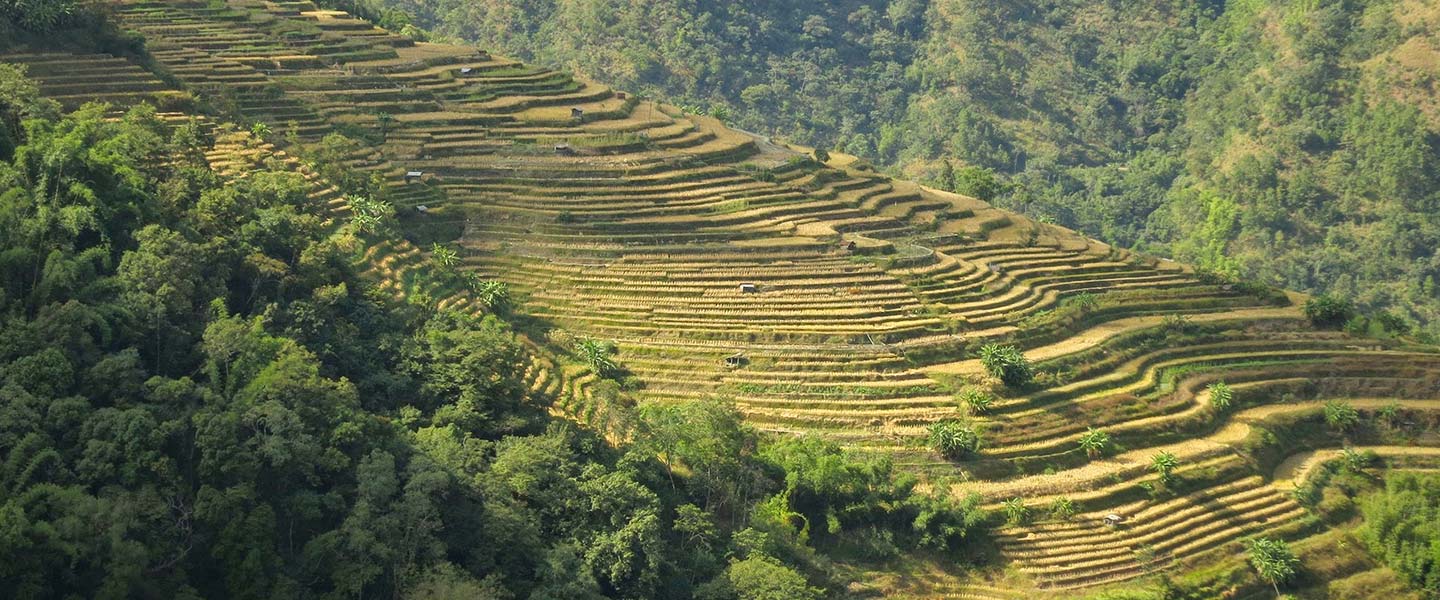-
Business Consulting
Our business consulting specialists offer a comprehensive blend of strategic advisory services. We assess the business, industry, operating model, synergy, skill sets and vision of the organisation and recommend the way forward
-
Digital Natives
Unlock growth with Grant Thornton Bharat's Digital Natives solutions. Customised support for tech-driven companies in healthcare, gaming, and more.
-
Digital Transformation Services
Grant Thornton’s digital transformation services help traditional businesses digitalise their business models with cloud technology, IoT consulting, app development and more DigiTech solutions.
-
Finance Transformation
Using a holistic approach, integrating digitalisation and digital transformation we help clients achieve transparency, control, governance, and faster decision making through real-time data within the business.
-
Human Capital Consulting
Our Human Capital Consulting team harnesses technology and industry expertise to assist in constructing adaptable organisations with transparency, fostering productive and value-driven workforces, and inspiring employees to engage meaningfully in their tasks.
-
Production Linked Incentive Scheme
Production-linked Incentive Scheme by the Indian government is aimed at boosting manufacturing. Grant Thornton Bharat offers varied services across sectors to help businesses avail of this scheme.
-
Public Sector Advisory
Our Public Sector Advisory team has focused streams, aligned with the core priorities of the Government of India. We are responsible for providing innovative and customized technical and managerial solutions.
-
Tech Advisory
We have amalgamated Digital Transformation, IT Advisory & Information Management and Analytics into a new offering, DigiTech.

-
Direct Tax services
Our tax specialists offer a comprehensive blend of tax services, tax litigation, regulatory and compliance services, helping you navigate through complex business matters.
-
Indirect Tax Services
Get tax services by leading tax firm Grant Thornton India. Our indirect tax services include consulting, compliance and litigation services for corporate, international and transaction tax
-
Transfer pricing services
Our transfer pricing services experts provide a range of services from provision of APA services to handling large global assignments including Country by Country reporting.
-
US Tax
At Grant Thornton, we help individuals and dynamic companies deal with US tax laws, which are one of the most complicated tax legislations across the world.
-
Financial Services - Tax
Best financial advisory services, tailored for small and large businesses by the experts having comprehensive knowledge of domestic laws and access to multifaceted tools to provide a valuable results.
-
Financial Reporting consulting services
Our experts have significant hands-on experience in providing IFRS/US GAAP services, end-to-end solutions and support services to fulfil financial reporting requirements.
-
Fund accounting and financial reporting
International operations often lack standardisation and have varied local reporting formats and requirements. Our experts can offer proactive insights, practical guidance, and positive progress and help meet regulatory timeframes.
-
Compliance and Secretarial Services
Our experts can assist in overhauling the entire compliance machinery of the organisation through evaluation of the applicable statutory obligations, monitoring of adequate governance controls, reporting and providing ongoing support.
-
Global People Solutions
As businesses transcend borders, both domestic and global considerations need equal attention. Our interim CFO and financial controller support services help organisations meet the business vision.
-
Finance and accounting outsourcing
Our accounting experts assist organisations in managing their accounting and reporting. Our dedicated Integrated Knowledge and Capability Centre (IKCC), allows us to service both the domestic and global markets efficiently and cost-effectively
-
Compliance Management System
We have automation solutions for you that will allow meeting government requirements and remain diligent, which when failed, can lead to penalties and loss in revenue.
-
Global compliance and reporting solutions
At Grant Thornton Bharat, we meet the challenges of our clients and help them unlock their potential for growth. Our professionals offer solutions tailored to meet our clients’ global accounting and statutory reporting requirements. With first-hand experience of local reporting requirements in more than 145+ locations worldwide, we provide seamless and consistent international service delivery through a single point of contact.
-
Related-party transaction governance
Related-party transactions (RPTs) are common in business structures where organisations engage with their group entities, such as holding companies, subsidiaries, associate concerns, joint ventures, or key management personnel, for various operational or financial purposes.
-
Family Offices & Private Client Services
Grant Thornton Bharat Private Client Services offers tailored advisory for family-owned businesses, focusing on governance, compliance, tax, succession planning, and family office structuring to sustain wealth and preserve legacies across generations.
-
GTMitra: Tax & Regulatory Tool
GTMitra, a specialised tax and regulatory tool by Grant Thornton Bharat, supports multinational businesses in understanding laws and regulations for effective growth strategies.
-
Labour codes
Labour codes solutions help you transition through the new legislation. At Grant Thornton, we help businesses divide their approach to make sure a smooth transition.
-
Alerts
At Grant Thornton India, with the help of our tax alerts, we help to provide updates on how to minimise your tax exposure and risks.
-
Unlocking opportunities: India investment roadmap
The India Investment Roadmap resource is designed to navigate the complexities of Indian tax and regulatory laws, providing seamless guidance and a comprehensive set of solutions to ensure a smooth process for investors aiming to establish or expand their presence in India.
-
CFO Solutions
Our comprehensive suite of solutions for CFOs

-
Cyber
In today’s time, businesses have gone through large transformation initiatives such as adoption of digital technologies, transition to cloud, use of advanced technologies et al.
-
Risk Optimisation
Our Governance, Risk and Operations (GRO) services encompass Internal Audit, Enterprise Risk Management, Internal Financial Controls, IT advisory, Standard Operating Procedures and other services.
-
Risk analytics
Grant Thornton Bharat’s CLEARR Insights is a state-of-the art data analytics platform that will help you in seamless data analysis and efficient decision-making.
-
Forensic & Investigation Services
The team of forensic advisory services experts consists of the best intelligence corporate experts, and fraud risk, computer forensic experts to deliver most effective solutions to dynamic Indian businesses.
-
Digital Forensics and Incident Response (DFIR)
Strengthen cyber resilience with proactive forensic audits
-
ESG consulting
Grant Thornton Bharat offers holistic ESG consulting solutions for sustainable business outcomes. With industry expertise and AI technology, we drive long-term value.

-
Transaction Tax Services
Our transaction tax experts understand your business, anticipate your needs and come up with robust tax solutions that help you achieve business objectives ensuring compliance and efficiency
-
Deal Advisory
Unlike other M&A advisory firm in India, we offer deal advisory services and work exclusively with controlled and well-designed strategies to help businesses grow, expand and create value.
-
Due Diligence
Grant Thornton’s financial due diligence services are aimed at corporate looking for mergers and acquisitions, private equity firms evaluating investments and businesses/promoters considering sale/divestment.
-
Valuations
As one of the leading valuation consultants in India, Grant Thornton specializes in all the aspects of the process like business valuation services, financial reporting, tax issues, etc.
-
Overseas Listing
Overseas listing presents a perfect platform for mid-sized Indian companies with global ambitions. Grant Thornton’s team of experts in listings, work closely with clients during all stages.
-
Debt & Special Situations Solutions
Grant Thornton Bharat offers specialist debt and special situations consulting services, including restructuring, insolvency, and asset tracing solutions.
-
Financial Reporting Advisory Services
Grant Thornton Bharat Financial Reporting Advisory Services offer end-to-end solutions for complex financial requirements, including GAAP conversions, IPO support, and hedge accounting advisory, ensuring accurate financial reporting and compliance.
-
Financial Statement Audit and Attestation Services
Grant Thornton Bharat offers customised financial statement audit and attestation services, ensuring impeccable quality and compliance with global standards. Our partner-led approach, technical expertise, and market credibility ensure effective solutions for your business needs.

- Agriculture
- Asset management
- Automotive and EV
- Banking
- Education and ed-tech
- Energy & Renewables
- Engineering & industrial products
- Fintech
- FMCG & consumer goods
- Food processing
- Gaming
- Healthcare
- Urban infrastructure
- Insurance
- Media
- Medical devices
- Metals & Mining
- NBFC
- Pharma, bio tech & life sciences
- Real estate and REITs
- Retail & E-commerce
- Specialty chemicals
- Sports
- Technology
- Telecom
- Tourism & hospitality
-
 Thought leadership Co-lending in India: Expanding credit access for MSMEsIn today’s rapidly evolving financial landscape, co-lending has emerged as a key enabler of credit expansion in India, facilitating partnerships between banks and non-banking financial companies (NBFCs) to extend credit more efficiently to underserved segments.
Thought leadership Co-lending in India: Expanding credit access for MSMEsIn today’s rapidly evolving financial landscape, co-lending has emerged as a key enabler of credit expansion in India, facilitating partnerships between banks and non-banking financial companies (NBFCs) to extend credit more efficiently to underserved segments. -
 Article Why India’s financial inclusion journey needs to focus on equity and access to creditFinancial services have expanded over a decade, giving millions access to bank accounts and digital payments. But true empowerment needs to reach every corner of the country if growth is to be long-term and sustained
Article Why India’s financial inclusion journey needs to focus on equity and access to creditFinancial services have expanded over a decade, giving millions access to bank accounts and digital payments. But true empowerment needs to reach every corner of the country if growth is to be long-term and sustained -
 Thought Leadership Competitive and sustainable agriculture & food processing in KeralaThe economy of Kerala is primarily driven by the services sector, which contributes 66% to the Gross State Domestic Product (GSDP).
Thought Leadership Competitive and sustainable agriculture & food processing in KeralaThe economy of Kerala is primarily driven by the services sector, which contributes 66% to the Gross State Domestic Product (GSDP). -
 Article Economic Survey 2024-25: Deregulation, investment and innovation for a Viksit BharatIndia's economic growth remains for a steady trajectory with real GDP expected to grow at 6.4% in FY25 and in the range of 6.3%-6.8% in FY26, reflecting resilience despite global uncertainties.
Article Economic Survey 2024-25: Deregulation, investment and innovation for a Viksit BharatIndia's economic growth remains for a steady trajectory with real GDP expected to grow at 6.4% in FY25 and in the range of 6.3%-6.8% in FY26, reflecting resilience despite global uncertainties.
-
Quarterly Aviation Insights
Explore the latest trends in aviation industry with Grant Thornton Bharat’s Quarterly Aviation Insights. Stay updated on industry growth, market shifts & key developments.

-
Freight Forward: Quarterly insights
Logistics sector in India is adapting to rising costs, global disruptions, and the growing urgency of sustainability.
-
India-UK
India-UK

The northeastern region (NER) of India, encompassing the states of Assam, Meghalaya, Tripura, Manipur, Mizoram, Nagaland, Arunachal Pradesh, and Sikkim, holds a distinct position within the country. This region covers diverse agro-climatic zones and terrains, with several areas receiving considerable rainfall, making it a prime candidate for the development of agriculture and horticulture-based industries. The agricultural sector in the NER can be categorised into four sub-sectors: crops (including horticulture and field crops), livestock, forestry, as well as fishing and aquaculture.
The NER boasts of an abundant supply of water resources, accounting for 33% of the country’s total. It receives an annual average rainfall ranging from 2,480 mm to 6,350 mm. With such ample water resources, the implementation of appropriate technologies, including rainwater harvesting, can ensure sufficient irrigation facilities in the region.
Approximately 70% of the NER’s population depends on agriculture as a primary source of livelihood, making agriculture the cornerstone of the regional economy. However, despite its significance, the production of grains and agricultural produce in the region is disproportionately low compared to the national average. This discrepancy is further accentuated by the region’s fertile land, diverse horticultural produce, and the high demand for livestock and poultry products, which are often underutilised and relegated to subsistence-level farming.
Challenges faced by the agriculture sector in NER
Small land holdings and manual farming
This is one of the prominent challenges faced by the agriculture sector in the NER, with small and marginal farmers dominating the landscape. A majority of agricultural operations are conducted manually or with rudimentary tools, without the use of modern machinery. This reliance on manual labour for ploughing, sowing, irrigating, and harvesting has resulted in reduced yields.
Limited market access and infrastructure gaps: The presence of major players and national-level enterprises in the region is minimal, primarily due to logistical challenges. The rugged terrain, restricted accessibility, and limited transportation options hinder the development of a robust supply chain. This issue is further exacerbated by the absence of essential infrastructure, such as cold storage facilities, machinery, testing laboratories and processing units. The lack of moisture-proof storage facilities, coupled with exposure to pests and rodents, forces farmers to sell their produce immediately after harvest, often at low market prices due to oversupply. Consequently, farmers experience significant post-harvest losses.
Interventions and recommendations
- Entrepreneurship and partnerships: The transformation of agriculture and its allied sectors in the NER requires a systematic approach driven by entrepreneurship and partnerships that place the farming community at the core of development efforts. It is crucial to harness and showcase the region’s strengths. For instance, the northeastern climate is conducive for abundant production of unique and exotic fruits specific to the area. Some of these have even received coveted “Geographical Indication (GI)” tags to acknowledge their distinctiveness and facilitate their commercialisation, such as the Queen pineapple of Tripura, Kachai lemon of Manipur, Tezpur litchi of Assam, Khasi mandarin of Meghalaya, and Malbhog banana of Assam.
- Comprehensive interventions across value chains: To facilitate the development and enhancement of agriculture in the region, comprehensive technical, institutional, and governmental interventions are required across the agricultural and horticultural value chains. These interventions should aim to establish a network that allows farmers, farmworkers, and non-farm stakeholders to access inputs, services, and knowledge, leading to improved sales and profits. This holistic approach will result in enhanced produce quality, increased processing scale, better pricing, and higher returns for farmers, while also minimising postharvest losses.
- State-specific and value-chain interventions: To initiate this process, tailored interventions specific to states, regions, and value chains must be developed. Given the diverse terrain and varying demands associated with each value chain or commodity, in-depth research and analysis are essential for mapping the situation, identifying requirements, and suggesting actionable interventions to enhance farm productivity and profitability.
In Meghalaya, for instance, a comprehensive mapping of the turmeric value chain was conducted to promote onfarm enterprises. This initiative, managed by the Program Management Unit for the Cluster Development Programme of the National Horticulture Board, assessed activities, value addition, and prices at each stage of the product’s journey, from farming by producers to sale to consumers for enterprise development. Such exercises are crucial for understanding value addition, pricing dynamics, and potential opportunities throughout the cultivation, processing, disposal, and logistics stages. - Leveraging collective action: Adopting a collective action approach that leverages the strength of numbers is another pivotal strategy. Uniting farmers through farmer producer organisations, companies, producer groups, and self-help groups (SHGs) streamlines access to credit and inputs, making it more affordable and efficient. Furthermore, this collective approach increases the scale of operations, creating better prospects for marketing and processing.
- Industry associations and common facility centres: In Assam, the Cluster Development Technical Agency (CDTAAPART) Project, funded by the World Bank, has fostered the formation of Industry Associations comprising farmers and food processing workers. These associations aim to establish common facility centres (CFCs) for various value chains, effectively operating as food processing enterprises under a common brand name. For instance, a paddy CFC has already been established, and plans are underway to establish a kachi ghani oil mill for mustard oil production.
By collaborating, farmers have successfully secured funds, machinery, and established their brand for their product lines. This cooperative approach has enabled them to procure raw materials, packaging, and labeling items at cost-effective rates and meet compliance requirements more efficiently than if pursued individually. Additionally, this approach opens improved marketing prospects for their products. - Support from institutional organisations: Support from institutional organisations can play a transformative role in enhancing agricultural practices. Krishi Vigyan Kendras (KVKs), state agriculture universities, ICAR branches, the National Seed Corporation, and collaboration with organisations such as NABARD and RSETI can provide valuable resources and services. These include information dissemination, training, technology transfer, access to inputs (including breeder seeds, fertilisers, and farm equipment), market information, credit facilities, infrastructure development, and more. Collectively, these institutes serve as avenues to enhance and expand agricultural extension services for both farmers and workers.
- Empowering women in agriculture: Projects initiated by Grant Thornton Bharat, such as the Promotion of Value Chain and Market Linkages Project with Assam State Rural Livelihood Mission or the initiatives undertaken in Assam under the STREE project, emphasise the importance of linking and converging women farmers with such institutions. This central component of capacity building and skill training empowers women in agriculture and strengthens their participation in the sector.
Conclusion
While many other regions in India are progressively shifting from traditional agriculture-based economies to industry or service-oriented ones, the NER remains heavily reliant on the agricultural sector. To ensure inclusive development in the area, there is a compelling need to promote agro-based industries. The abundance of raw materials can readily support the growth of processed food industries and open up opportunities to tap into global markets. Strategic planning, that improves market linkages with the mainland and introduces larger players, aggregators, and buyers, will be instrumental in fostering regional agricultural development and expanding the reach of its produce beyond its borders.
The NER is uniquely endowed with diverse agro-climatic conditions, varying soil types, and copious rainfall. These conditions offer immense potential for horticulture and value-added products that can be marketed within the country and abroad. With the right interventions, the region’s agricultural produce can be celebrated, local economies can thrive, and the livelihoods of farmers and other stakeholders involved in the industry can be significantly uplifted. There is both opportunities and challenges in this journey towards achieving these goals. However, with concerted efforts, strategic planning, and unwavering commitment, the NER can set the stage for a brighter and more prosperous future, where agriculture flourishes, communities thrive, and the world recognises the NER as a formidable agricultural powerhouse.
